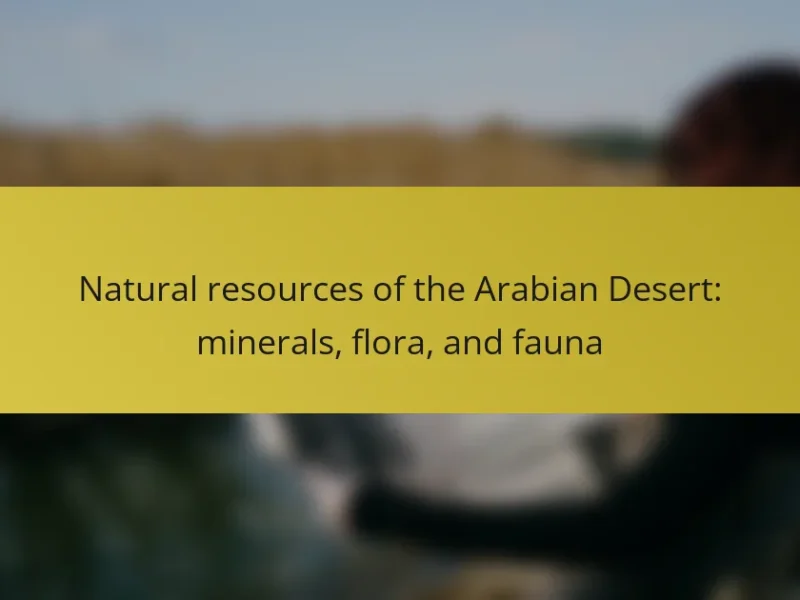
What is the Fertile Crescent and its historical significance?
The Fertile Crescent is a historical region in the Middle East, known for its rich soils and early agricultural development. It extends from the eastern Mediterranean coast through the Levant, and into parts of modern-day Iraq and Iran. This area is significant because it is often referred to as the “Cradle of Civilization.”
The Fertile Crescent saw the rise of some of the world’s first cities and empires, including Sumer, Akkad, Babylon, and Assyria. These civilizations made advancements in writing, trade, and governance. The agricultural practices developed in this region allowed for surplus food production. This surplus supported population growth and urbanization.
Archaeological evidence shows that farming began in the Fertile Crescent around 10,000 BCE. The domestication of plants and animals occurred here, leading to the establishment of settled communities. The innovations in agriculture and technology in the Fertile Crescent laid the foundation for future civilizations.
Overall, the Fertile Crescent played a crucial role in human history by fostering the development of agriculture, urban centers, and complex societies.
How did the Fertile Crescent shape ancient civilizations?
The Fertile Crescent shaped ancient civilizations by providing a rich agricultural environment. This region, spanning modern-day Iraq, Syria, Lebanon, Israel, and Palestine, had fertile soil and abundant water sources. The availability of resources allowed early humans to transition from nomadic lifestyles to settled farming communities. This agricultural surplus supported population growth and the development of cities. The rise of cities led to the establishment of complex social structures and governance. Trade networks emerged, connecting various civilizations and facilitating cultural exchange. Innovations in writing and technology also flourished in this region. The Fertile Crescent thus laid the foundational elements for the advancement of human civilization.
What key civilizations emerged in the Fertile Crescent?
The key civilizations that emerged in the Fertile Crescent include the Sumerians, Akkadians, Babylonians, and Assyrians. The Sumerians are known for establishing one of the first urban societies around 4500 BCE. They developed cuneiform writing and built city-states like Ur and Uruk. The Akkadians, led by Sargon of Akkad, unified the region around 2334 BCE. They created the first known empire in history. The Babylonians rose to prominence with Hammurabi’s Code around 1754 BCE, establishing a legal framework. The Assyrians were known for their military prowess and built a vast empire by the 9th century BCE. Each civilization contributed to advancements in agriculture, writing, and governance, shaping the course of human history.
What were the defining characteristics of these civilizations?
The defining characteristics of ancient civilizations in the Fertile Crescent included advanced agricultural practices, urban development, and complex social structures. These civilizations, such as Sumer, Akkad, Babylon, and Assyria, relied on irrigation systems to support crop cultivation. This agricultural innovation led to surplus food production, enabling population growth and the establishment of cities. Urban centers emerged as hubs of trade, culture, and governance. Social hierarchies developed, with distinct classes, including rulers, priests, and laborers. Writing systems, like cuneiform, facilitated record-keeping and communication. Additionally, these civilizations made significant advancements in technology, mathematics, and astronomy, influencing future societies. Their contributions laid the foundation for subsequent civilizations in the region and beyond.
Why is agriculture important in the context of the Fertile Crescent?
Agriculture is crucial in the context of the Fertile Crescent because it enabled the development of early civilizations. This region, known as the “Cradle of Civilization,” saw the transition from nomadic lifestyles to settled farming around 10,000 BCE. The domestication of crops like wheat and barley allowed for surplus food production. This surplus supported population growth and the establishment of complex societies. Additionally, agriculture facilitated trade and the rise of cities such as Uruk and Babylon. Historical evidence shows that the agricultural advancements in the Fertile Crescent laid the foundation for modern society.
How did agriculture develop in the Fertile Crescent?
Agriculture developed in the Fertile Crescent through the domestication of plants and animals. Early humans transitioned from nomadic lifestyles to settled farming communities around 10,000 BCE. They cultivated wheat, barley, and legumes in this region’s rich soil. The availability of water from the Tigris and Euphrates rivers supported irrigation practices. This led to increased crop yields and population growth. Archaeological evidence shows that sites like Jericho and Çatalhöyük were among the first agricultural settlements. The surplus of food enabled trade and the development of complex societies. These advancements played a crucial role in the rise of early civilizations in the area.
What crops and livestock were significant in ancient agriculture?
Significant crops in ancient agriculture included wheat, barley, and legumes. Wheat was a staple food in many ancient civilizations. Barley was used for food and brewing. Legumes, such as lentils and chickpeas, provided essential protein. Livestock included sheep, goats, and cattle. Sheep provided wool and meat. Goats were valued for milk and meat. Cattle were used for plowing and as a food source. These crops and livestock formed the foundation of agricultural practices in the Fertile Crescent.

How did the Fertile Crescent influence trade and economy?
The Fertile Crescent significantly influenced trade and economy through its agricultural abundance. This region, known as the cradle of civilization, supported early farming practices. The surplus of crops allowed for the development of trade networks. Communities could exchange goods, leading to economic growth. Major trade centers emerged, such as Ur and Babylon. These centers facilitated commerce between diverse cultures. The establishment of currency further enhanced trade efficiency. Thus, the Fertile Crescent laid the foundation for complex economies and trade systems.
What role did agriculture play in trade networks?
Agriculture was fundamental to trade networks in ancient civilizations. It provided a surplus of food, enabling communities to engage in trade. This surplus allowed societies to specialize in various crafts and goods. As a result, agricultural products became key trade items. For instance, grains, fruits, and livestock were exchanged for tools and textiles. The Fertile Crescent, known for its fertile land, was a central hub for such trade. Historical evidence shows that agricultural communities developed extensive trade routes. These routes facilitated the exchange of not just food, but also ideas and technologies. Thus, agriculture directly influenced the economic and cultural interactions of ancient societies.
How did agricultural surplus affect economic growth?
Agricultural surplus significantly boosted economic growth by enabling specialization and trade. When food production exceeded immediate needs, societies could focus on other activities. This surplus allowed individuals to pursue crafts, commerce, and governance. For example, in ancient Mesopotamia, surplus crops supported the development of cities and complex economies. The increased availability of resources facilitated trade with neighboring regions. Historical evidence shows that areas with agricultural surplus experienced population growth and urbanization. This transformation laid the foundation for advanced civilizations. Economic activities expanded, leading to innovations and cultural developments.
What were the trade routes established by ancient civilizations?
Ancient civilizations established several key trade routes. The Silk Road connected China to the Mediterranean, facilitating trade of silk and spices. The Incense Route linked Arabia to the Mediterranean, transporting frankincense and myrrh. The Trans-Saharan trade routes connected West Africa to North Africa, enabling the exchange of gold and salt. The Maritime Spice Route connected Southeast Asia to Europe, allowing the trade of spices and precious goods. These routes significantly influenced economic and cultural exchanges among civilizations.
How did the geography of the Fertile Crescent impact its civilizations?
The geography of the Fertile Crescent significantly influenced its civilizations by providing fertile land and access to water. This region, located between the Tigris and Euphrates rivers, facilitated agriculture. The rich alluvial soil supported the growth of staple crops like wheat and barley. Irrigation systems were developed to manage water supply effectively. This agricultural surplus enabled population growth and the establishment of cities. Additionally, the geography allowed for trade routes to flourish. The proximity to other cultures fostered exchange and innovation. Historical records indicate that these factors contributed to the rise of early urban centers like Ur and Babylon.
What geographical features defined the Fertile Crescent?
The Fertile Crescent is defined by its rich alluvial plains and river systems. This region includes the Tigris and Euphrates rivers, which provided essential water resources. The land is characterized by fertile soil, conducive to agriculture. The area’s geography facilitated the growth of early civilizations. Mountain ranges to the north and deserts to the south created natural boundaries. These features allowed for diverse ecosystems and crop production. The climate is typically arid, with seasonal rainfall supporting agriculture. Historical evidence shows that this geography enabled the rise of agriculture around 10,000 BCE.
How did these features influence settlement patterns?
The features of the Fertile Crescent significantly influenced settlement patterns by providing fertile land and access to water sources. The region’s rich soil supported agriculture, leading to the establishment of permanent settlements. These agricultural practices enabled communities to sustain larger populations. Proximity to rivers such as the Tigris and Euphrates facilitated irrigation, enhancing crop yields. As a result, settlements clustered around these water sources. Archaeological evidence indicates that cities like Uruk and Babylon emerged in this area due to these advantageous features. The stability provided by agriculture allowed for the development of complex societies and trade networks.

What are the lasting impacts of the Fertile Crescent on modern society?
The Fertile Crescent has significantly influenced modern society through agriculture, urbanization, and cultural development. It is known as the cradle of civilization. The region facilitated the transition from nomadic lifestyles to settled farming communities. This agricultural innovation led to surplus food production. Surplus enabled population growth and the establishment of cities. The first known cities emerged in this area, such as Ur and Babylon. These cities became centers of trade and culture. Additionally, the Fertile Crescent contributed to advancements in writing and governance. The cuneiform script originated here, influencing communication. Overall, the Fertile Crescent laid the foundation for modern civilization.
How did ancient innovations in the Fertile Crescent shape future civilizations?
Ancient innovations in the Fertile Crescent significantly shaped future civilizations through the development of agriculture, writing, and urbanization. The introduction of farming techniques allowed societies to transition from nomadic lifestyles to settled communities. This agricultural revolution led to food surpluses, enabling population growth and the establishment of cities.
The creation of the cuneiform writing system in Mesopotamia facilitated record-keeping and communication, essential for administration and trade. Urban centers like Ur and Babylon became cultural and economic hubs, influencing surrounding regions. Innovations in irrigation techniques improved crop yields, further supporting complex societies.
These advancements laid the foundation for future civilizations by promoting social stratification, governance, and technological progress. The Fertile Crescent’s innovations set a precedent for agricultural practices and urban development that would be emulated worldwide.
What technological advancements originated from the Fertile Crescent?
The Fertile Crescent is known for several key technological advancements. These include the development of agriculture, which allowed for the cultivation of crops like wheat and barley. The invention of irrigation systems enabled the management of water resources for farming. The wheel was also invented in this region, facilitating transportation and trade. Additionally, the Fertile Crescent saw the creation of writing systems, such as cuneiform, which improved communication and record-keeping. These advancements laid the groundwork for complex societies and economies.
How do these advancements continue to influence agriculture today?
Advancements from the Fertile Crescent continue to influence agriculture today through the development of irrigation, crop domestication, and agricultural techniques. Irrigation systems established in ancient times laid the groundwork for modern water management practices. These systems enabled the cultivation of diverse crops in arid regions, which is still vital for food production today. Crop domestication initiated in the Fertile Crescent led to the breeding of high-yield varieties. This practice has evolved into modern genetic engineering and selective breeding techniques. Additionally, ancient agricultural techniques, such as crop rotation and polyculture, are still employed to enhance soil fertility and biodiversity. These foundational advancements have shaped contemporary agricultural practices, ensuring food security for growing populations.
What lessons can be learned from the agricultural practices of ancient civilizations?
Ancient civilizations demonstrate several lessons in agricultural practices. They emphasized the importance of crop rotation to maintain soil fertility. For example, the Sumerians practiced this method, which improved yields. They also utilized irrigation techniques to maximize water efficiency in arid regions. The Egyptians developed the basin irrigation system, which effectively managed floodwaters from the Nile.
Additionally, ancient societies cultivated diverse crops to ensure food security. The Incas grew potatoes and quinoa, which were resilient to varying climates. They also implemented sustainable practices, such as composting, to enhance soil health.
These practices highlight the value of innovation and adaptation in agriculture. By learning from ancient methods, modern agriculture can improve sustainability and productivity.
What sustainable practices can modern agriculture adopt from ancient methods?
Modern agriculture can adopt crop rotation from ancient methods. Crop rotation improves soil health and reduces pests. Ancient civilizations in the Fertile Crescent practiced this technique. They alternated crops to maintain soil nutrients. This method prevents soil depletion and enhances biodiversity. Another sustainable practice is the use of cover crops. Ancient farmers utilized cover crops to protect soil from erosion. These crops also add organic matter to the soil. Additionally, traditional irrigation methods can be beneficial. Ancient systems, like qanats, efficiently managed water resources. They minimized evaporation and maximized water use. These practices demonstrate the effectiveness of ancient agricultural techniques in promoting sustainability today.
How can understanding ancient agricultural systems benefit current food security?
Understanding ancient agricultural systems can enhance current food security by providing insights into sustainable farming practices. Ancient civilizations in the Fertile Crescent, such as Mesopotamia, utilized crop rotation and irrigation techniques. These methods improved soil fertility and maximized yield. Historical data shows that these practices supported large populations without depleting resources. For example, the use of canals and dikes allowed for efficient water management. This knowledge can inform modern agricultural strategies in water-scarce regions. Additionally, ancient biodiversity in crops offers genetic resources for developing resilient varieties. By studying these systems, contemporary agriculture can adapt to climate change challenges, ensuring food security for future generations.
The Fertile Crescent is a historically significant region in the Middle East, known as the “Cradle of Civilization,” where early agricultural development and the rise of ancient civilizations such as Sumer, Akkad, Babylon, and Assyria occurred. This article explores the impact of agriculture on societal advancement, including the establishment of urban centers, trade networks, and technological innovations. Key topics include the defining characteristics of these civilizations, the role of agricultural surplus in economic growth, and the lasting influences of ancient agricultural practices on modern society. Understanding the Fertile Crescent’s contributions provides insights into the foundations of contemporary agriculture and food security.


